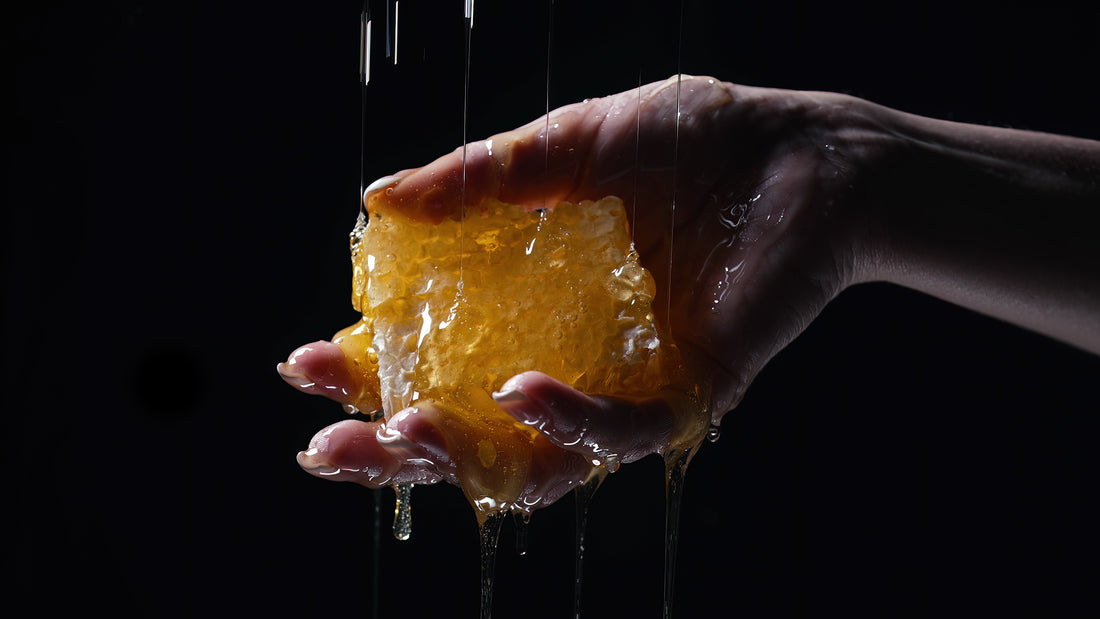When it comes to honey, many people are fascinated by the intricate process of how bees create this golden, sweet substance. One question that often arises is how do bees work without "hands". After all, it seems like a reasonable assumption that digits would be necessary for such a delicate task. So lets explore the biology behind this and again shed light on the amazing world of bees.
Understanding Bee Anatomy
To answer the question, it's important to understand the anatomy of bees. Bees belong to the insect family, and like other insects, they have six legs. However, bees do not have hands in the same way humans do. Instead, they have specialized structures called mandibles that serve a similar purpose.

Mandibles! That's the thing!
The Tools of the Honeybee
Mandibles are the bee's equivalent of hands. These strong, pincer-like structures are located on the head of the bee and are used for a variety of tasks. While they may not look like hands to us, they are highly effective tools for bees.
One of the primary functions of the mandibles is to manipulate and shape beeswax. Beeswax is a key component in honey production, as it is used to build the intricate hexagonal cells of the honeycomb. The mandibles allow bees to mold and shape the beeswax with precision into honeycomb, creating the perfect engineered structure for storing honey.

Antennae are also crucial in building honeycomb cells. The space between the antennae ends are exactly the width of the walls of the hexagonal cells. As they form the cells they constantly check the dimensions with natures provided tape measures!

The Honey-Making Process
Now that there is storage, let's delve into the honey-making process. Bees collect nectar from flowers using their long, straw-like tongues called proboscis. They then store the nectar in a special stomach called the crop.

Once back at the hive, the bees regurgitate the nectar into the mouth of another bee, passing it from bee to bee like a bucket brigade. During this process, the nectar comes in contact with enzyme invertase that the bees cop naturally produces. This isolates and inverts the complex sugars of the nectar into simple sugars that transform the nectar into honey. Flower nectar is a complex mix of sugars but it is mainly glucose (roughly 30%, by weight) and fructose (40%). It also contains maltose, levulose, and a tiny bit of sucrose. Water, minerals, and ash are also present.
Next, the enzyme blended nectar is deposited into the honeycomb cells. This is where the mandibles come into play. The bees use their mandibles to shape and seal the cells, ensuring that the honey is stored securely.
The Final Stages
The bees fan their wings to evaporate excess moisture from the nectar. Once the moisture content reaches a certain level, the bees cap the cells with a layer of beeswax, preserving the honey for future consumption. This is where the mandibles come into play again. The bees use their mandibles to shape and seal the cells, ensuring that the honey is stored securely.
It's truly remarkable how bees, without hands as we know them, are able to create such a complex and delicious substance. Their mandibles serve as their tools, allowing them to shape beeswax and store honey with precision.

Look Ma! No Hands!
While they may not have hands and digits, bees have evolved with specialized body parts called mandibles and siphon like tongues called proboscis that equipe them for work. The honey-making process is a testament to the remarkable abilities of bees and their unique adaptations. Next time you enjoy a spoonful of honey, take a moment to appreciate the incredible biology of these industrious insects.


